If you’re a DIY enthusiast or someone who loves tackling home improvement projects, you know the frustration that comes with a power tool suddenly grinding to a halt. One tool that seems to have a mind of its own is the circular saw. Just when you’re about to make that perfect cut or finish that long-awaited project, it stops dead in its tracks, leaving you scratching your head and wondering, “Why does my circular saw keep stopping?” But fear not! This blog post will delve into the world of troubleshooting and arm you with the knowledge to keep your circular saw running smoothly and efficiently. So, don’t stop now, let’s get to the bottom of this issue and get you back to sawing with confidence!
Things to consider before you start using a circular saw
Circular saws are powerful tools for cutting wood, metal, plastic and other materials. However, they can also be dangerous if misused or not used properly. Before using a circular saw, always take the time to review safety guidelines and common troubleshooting tips.
- Read your manual: All power tools come with an instruction manual that outlines its safe use and operation. Be sure to thoroughly read over this information before using your circular saw.
- Inspect the blade: Always check for signs of wear and tear on the blade before each use. Replace any blades that have become damaged or worn down with a new one.
- Check power cords: Make sure that the power cord is not frayed and that the plugs are securely connected.
- Check for blade balance: A balanced blade will reduce vibration and ensure smoother operation. Use a special tool to check for balance or take your saw to a qualified technician if necessary.
- Adjust bevel angle correctly: When adjusting the angle of the bevel, make sure that it is set at a safe and comfortable level for your cutting task.
- Wear the proper safety equipment: Always wear protective goggles, gloves and other safety gear when using a circular saw to protect yourself from injury.
- Follow safe operation procedures: Always make sure to keep both hands on the saw when in use and to stay focused on your cutting task. Also, never try to force the saw through the material.
By following these tips, you can ensure a safe and successful experience when using your circular saw. Just remember to always take the time to review safety guidelines before each use and never cut without wearing the proper protective gear. With a little bit of care and attention, you’ll be able to make clean, accurate cuts with ease [1].
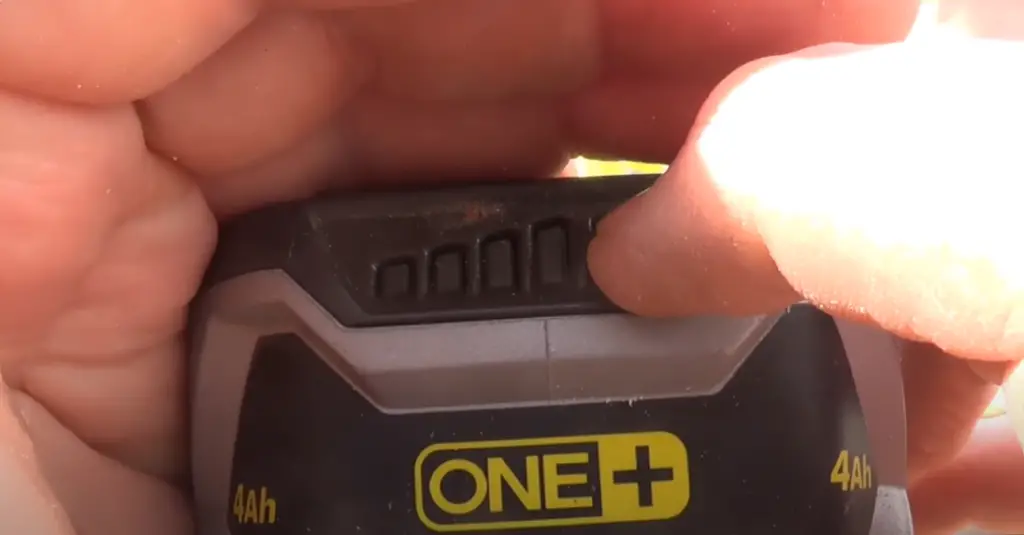
Find out the reasons why a circular saw blade stops spinning
One of the most common problems that occur when using a circular saw is when the blade stops spinning. This problem can be caused by several different things, including a worn-out motor, an incorrectly installed blade, or a faulty power supply.
To help you diagnose this issue and get your circular saw working again as soon as possible, here are some tips to help you troubleshoot the issue:
Check for Obstructions
Before moving on to the next step, take a moment to thoroughly inspect your saw blade. Ensure that no obstructions are impeding its functionality. If you come across any chunks of wood or other materials stuck on the blade, gently and carefully remove them using a wooden dowel or any other blunt object. Taking this precautionary action will help ensure optimal performance and safety throughout the process.
Inspect Your Power Supply
If nothing is obstructing your circular saw blade, the next step is to carefully examine your power supply. Ensure that you are using the appropriate voltage and wattage for your specific tool, and double-check that all cables are securely and correctly connected. Additionally, take a moment to inspect the contacts of the plug and ensure they are clean and free from any dust, debris, or corrosion. If you happen to notice anything unusual or out of place during this inspection, it is highly recommended to seek the assistance of a qualified electrician in your local area. Their expertise will help ensure the safe and efficient operation of your power tools.
Replace the Motor
If both the above-mentioned troubleshooting steps fail to resolve the issue, indicating a persistent problem with your circular saw motor, it may be necessary to consider replacing it. It is highly recommended to seek assistance from a professional electrician due to the complexity of this task. Replacing the motor involves carefully disassembling the saw body, requiring a high level of caution and expertise.
When selecting a replacement motor, it is crucial to ensure that it possesses similar specifications as the original one. This is essential to guarantee a perfect fit and optimal performance of your circular saw. Taking the time to choose the right motor will contribute to the longevity and efficiency of your tool, allowing you to continue your woodworking projects with confidence and precision.
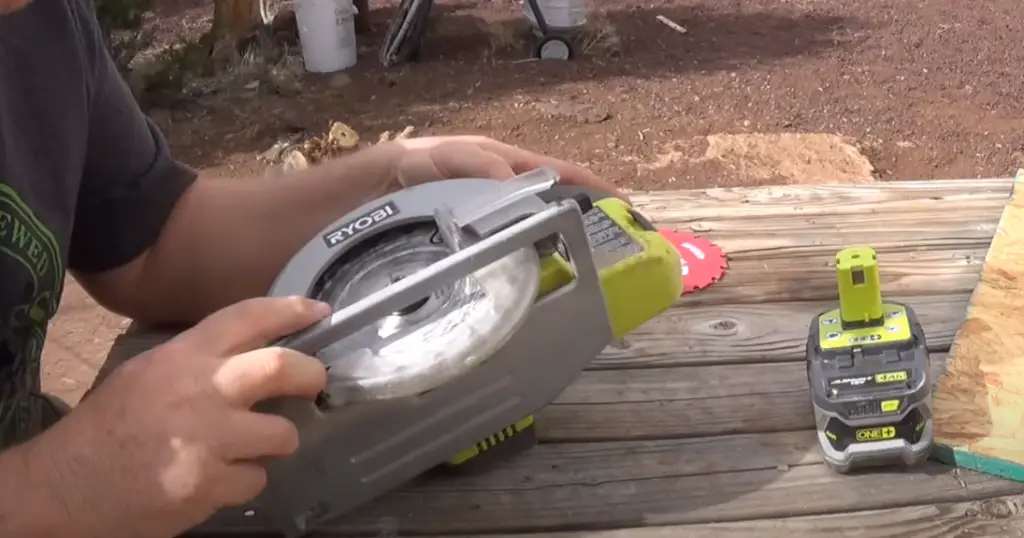
Inspect the Blade
Finally, if you are still having trouble getting your saw blade to spin, take a moment to inspect it for any signs of wear and tear. If the blade is severely damaged or warped in any way, it is important to replace it with an appropriate high-quality replacement blade from your local store or online retailer.
By following these tips, you should be able to quickly and easily troubleshoot any issues with your circular saw blade. If the problem persists even after following these steps, contact a qualified electrician in your area for professional advice [2].
Why does my circular saw keep stopping?
Many people have encountered this frustrating problem with circular saws: Your saw works perfectly for a while, and then suddenly it stops cutting. This can be incredibly frustrating, especially if you’re in the middle of a job!
There are several possible causes of your saw stopping while in use. The most common reason is that you are putting too much pressure on the saw blade. This can cause the motor to overheat and the saw to stop working. It is important to be aware of how much pressure you are putting on the saw while using it, and not to push too hard.
Another possible cause could be that your saw is low on lubricant or needs a new blade. Over time, blades will become dull and need to be replaced if they are not regularly sharpened. Additionally, make sure that the saw is properly lubricated before each use.
Finally, another possible cause could be a power issue. If your saw is plugged into an extension cord or surge protector, make sure it is rated for the correct wattage of the saw. Moreover, if you are using a generator, check to make sure it is providing enough power to the saw.
By understanding the potential causes of a circular saw stopping while in use, you can take steps to prevent this issue from occurring and keep your job running smoothly. Investing in high-quality blades and properly lubricating and maintaining your saw are both important aspects of making sure it runs efficiently. Additionally, it is important to be aware of the pressure you put on your saw blade while using it and not push too hard. Following these steps can help you avoid this frustrating issue with circular saws [3].
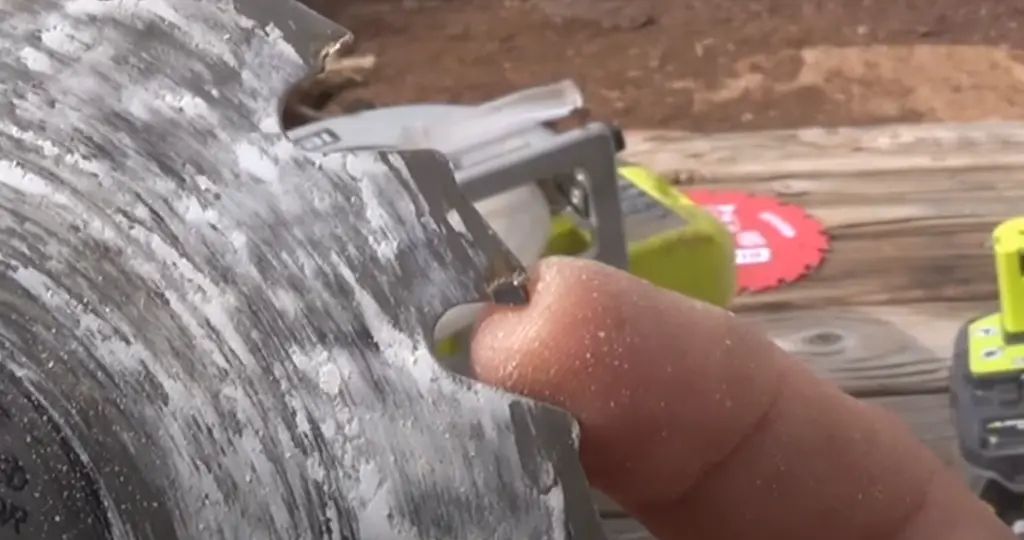
How do you fix a circular saw that keeps stopping?
Fixing this problem caused by the blade\
The most common cause of a circular saw stopping is because the blade has become jammed. If this happens, it can prevent the motor from running properly and will need to be fixed before the saw can function again.
To fix this problem, turn off the power to the saw and remove any debris that may have caused the jam. Once you’ve done this, you can then check the blade for any damage or wear. If there is excessive wear, replace the blade and tighten it according to the manufacturer’s instructions.
If the blade is not damaged but still won’t turn, try lubricating the gears with machine oil to help reduce friction and make them run more smoothly. Once this is done, turn on the power to the saw and test it again.
Fixing this problem caused by the motor\
If your circular saw is stopping due to a faulty motor, you’ll need to have it serviced or replaced entirely. To determine if this is the cause of the issue, turn off the power and inspect the motor for any visible signs of damage. If the motor appears to be in working order, turn it on and see if it runs properly.
If the motor is not functioning correctly, take it to a qualified repair shop where they can inspect and replace any defective parts. Once this is done, you should be able to use your saw again without further issues.
Fix this problem caused by incorrect handling
Sometimes, a circular saw can stop working due to incorrect usage or handling. This could include user errors such as using too much force when cutting, not applying enough pressure to the blade, or even trying to cut materials that are too thick for the saw’s capabilities.
To avoid these issues in the future, make sure you are following all safety precautions and handling your saw correctly. Additionally, be sure to use the right blade for the material you are cutting and always apply even pressure when using the saw.
These steps should help ensure that your circular saw is functioning properly and provide you with a safe working environment.
Top Circular Saw Tips and Tricks
If you’re a woodworker, having a reliable saw is one of the most important tools in your toolbox. A circular saw is an efficient and precise way to cut through different materials with ease — but like any other power tool, it can break down from time to time. Here are some tips for troubleshooting your circular saw so that you can get the job done right, no matter what.
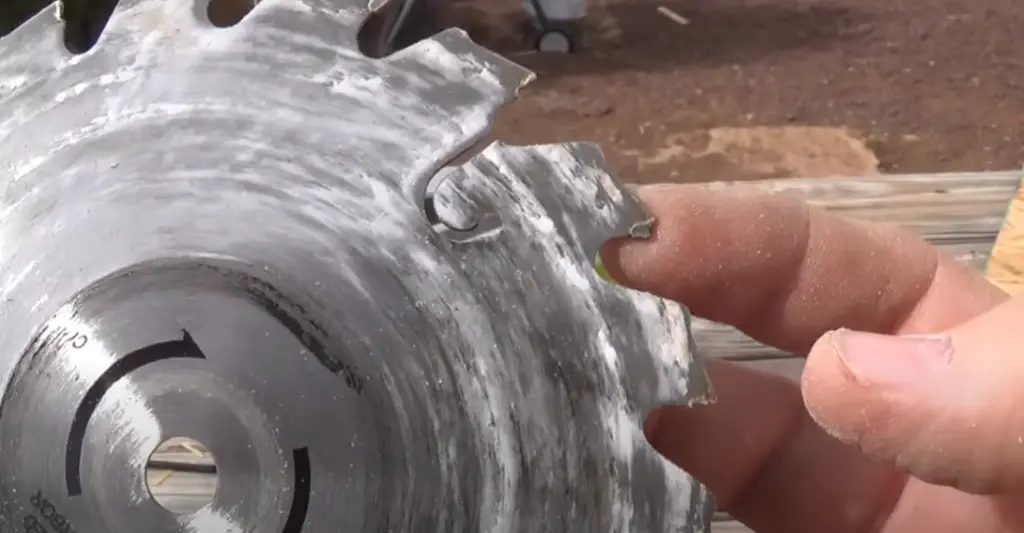
Check the Blade
The first crucial step in troubleshooting your circular saw is to carefully inspect the blade. Examine it closely for any signs of chipping or misalignment, as these issues can significantly impact the quality of your cuts, resulting in a sloppy and uneven finish. To ensure optimal performance, it is essential to make certain that the blade is not only sharp but also properly aligned with the saw. Taking the time to thoroughly check and address these key aspects will help you achieve precise and flawless cuts with your circular saw.
Clean and Lubricate Your Saw
Over time, as you use your saw, dust and debris will inevitably start to accumulate. This buildup can negatively impact its efficiency and even cause operational issues. To prevent this, it’s important to make regular cleaning a part of your maintenance routine. You can use a vacuum cleaner or compressed air to effectively remove the accumulated dust and debris, ensuring that your saw operates smoothly.
Additionally, it’s essential to pay attention to the components of your saw and ensure they are properly lubricated. By applying oil to the moving parts, you’ll facilitate smooth and unrestricted movement, resulting in optimal performance.
By taking these simple yet effective steps to clean and maintain your saw, you’ll be able to prolong its lifespan and enjoy consistent and reliable performance whenever you need it.
Check for Blown Fuses
Most circular saws are equipped with an onboard fuse as a safety feature. This fuse is designed to protect the saw from power surges and other electrical issues. If you’re experiencing any problems with your saw, it’s important to check the fuse first. Simply inspect the fuse to ensure it hasn’t blown, and if it has, replace it with a new one. By taking this simple step, you can effectively troubleshoot and resolve any issues you may be encountering with your saw.
Test for Power Losses
If you turn on your saw and there’s no power, then you may be dealing with a power loss issue. This could be caused by a variety of factors, such as a loose power cord or a tripped circuit breaker. First, check the power cord and make sure it’s properly plugged in, ensuring that there are no frayed wires or damage. Additionally, inspect any external switches that could potentially be causing the problem, ensuring that they are in the correct position. If all else fails and the issue persists, it is recommended to test the outlet using a different electronic device to ensure that it’s working correctly. Taking these steps can help troubleshoot and identify the source of the power loss problem.
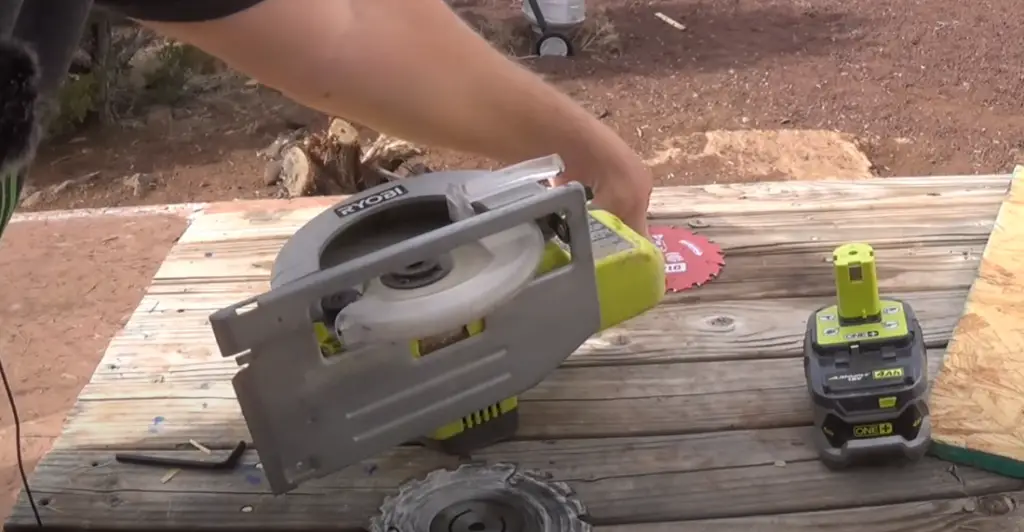
Replace Damaged Parts
If all else fails and you find that your saw is not functioning properly, it might be necessary to consider replacing certain parts. Take a close look at the blade and other components, carefully inspecting them for any signs of damage or wear. If you notice any issues, it is recommended to promptly replace them with new, high-quality replacements. By doing so, you can effectively restore your saw to its original, optimal working condition, ensuring reliable performance for your future projects.
How to cut wood with a circular saw?
When using a circular saw for cutting wood, several steps should be taken to ensure the cleanest and safest cuts. Here are some tips to get you started on your way:
- Make sure the blade is sharp; if it’s not, replace it with a new blade before beginning.
- Choose the correct type of wood for the job; some saws are designed to cut certain types of wood while other saws may not be suitable.
- Choose the correct speed for cutting; different speeds will produce different results depending on the type of wood and blade being used.
- Prepare your work surface before beginning; make sure your surface is even, free from debris, and secure.
- Secure the material being cut to the work surface, and make sure it’s firmly held in place before starting.
- Slowly guide the saw along your marked cutting lines; take care not to veer off course and create an uneven cut.
- Release pressure on the saw after each cut is finished; this will help prevent kickback from occurring when the saw blade exits the material.
- Use clamps to secure the material you’re cutting, and use a straight edge as a guide if needed.
- Always wear safety equipment when using a circular saw; goggles, gloves, and hearing protection are essential for the safe operation of power tools.
These tips will help ensure that your woodcuts are clean, safe, and precise. Always use caution when working with a circular saw to prevent any potential injury or damage. With the right preparation and safety precautions in place, you’ll be able to make perfect cuts every time!
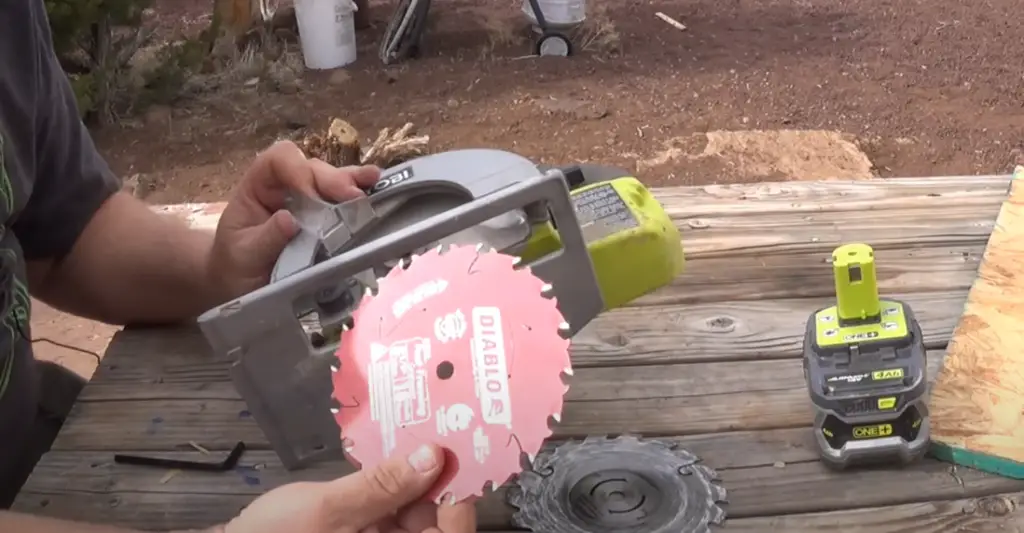
FAQ
What are the safety precautions when using a saw?
It is essential to take safety precautions when using any saw, especially a circular saw. Ensure that you wear all of the appropriate protective gear – including goggles, gloves and steel-toe boots. Make sure your workspace is free from clutter for safe operation and check the blade or other cutting tool to make sure it is in good condition before use. Avoid placing your hands near the blade or cutting tool and always keep your fingers away from the trigger. Finally, make sure you unplug the saw when leaving your workspace or not in use.
What should I do if my circular saw is not working properly?
If your circular saw is not operating correctly, start by checking the cord to ensure it is securely plugged into an electrical outlet. If the cord is connected properly, then next check to see if the saw blade is properly installed or if it needs sharpening. You should also inspect any other components for signs of damage or wear and tear, such as inspecting the motor’s fan blades for cracks or checking the power switch for corrosion. If all else fails, take your circular saw to a certified technician for repair.
How do I know when to replace the blade on my circular saw?
A worn or damaged blade can be hazardous, so it’s important to replace your blades regularly. Signs that you need a new blade include excessive vibration during use, slower than normal cutting speed and difficulty in starting a cut with the saw. Additionally, if the blade has sustained any physical damage, such as from impact or dropping, then it should be replaced immediately.
What is the best way to store a circular saw?
The best way to store your circular saw is by hanging it up in a dry and secure place. If possible, avoid storing near any flammable materials or liquids – such as gasoline or paint. Store the blade in its original packaging to prevent it from becoming dulled or damaged, and ensure that all safety guards are firmly attached. Finally, make sure to unplug the saw before moving it or storing it away.
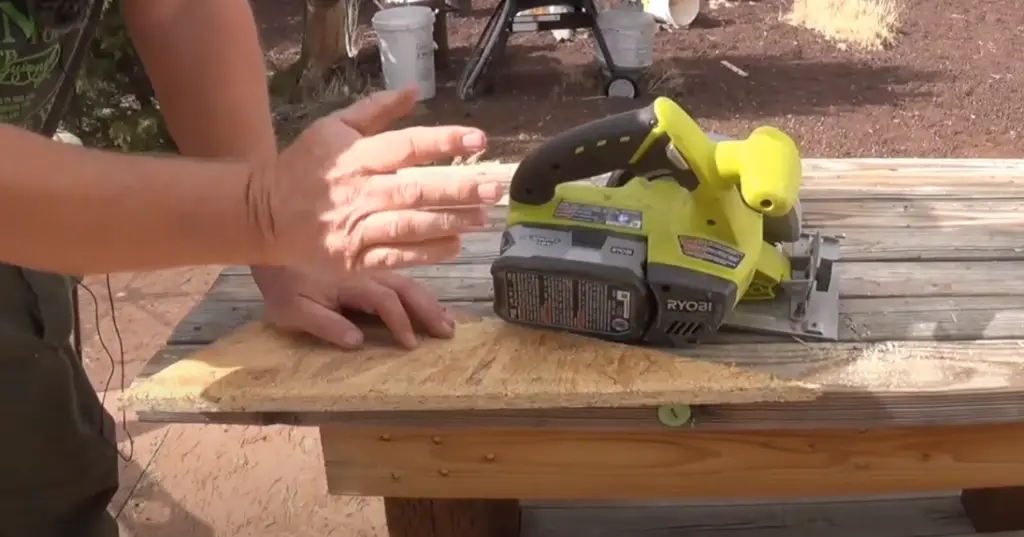
What maintenance do I need to perform on my circular saw?
It is important to regularly inspect and perform routine maintenance on your circular saw. Start by checking the blade or cutting tool to make sure it is in good condition and properly sharpened before each use. Inspect all components for signs of damage or wear and tear, such as examining the motor’s fan blades for cracks or inspecting the power switch for corrosion. Additionally, lubricate any moving parts with general-purpose oil to keep the saw running smoothly. Finally, make sure to unplug the saw when not in use and store it away properly.
What should I do if my circular saw is making a strange noise?
If your circular saw is making an unusual sound, start by checking the blade or cutting tool to ensure it is securely attached and in good condition. If the blade is properly installed and sharpened, then next check to see if any of the moving parts are clogged with sawdust or debris. Additionally, inspect other components for signs of damage or wear and tear – such as examining the motor’s fan blades for cracks or checking the power switch for corrosion. If all else fails, take your circular saw to a certified technician for repair.
What type of blade should I use on my circular saw?
The best type of blade for your circular saw will depend on the material you are cutting. For instance, a steel-tipped blade is ideal for cutting through hard materials like wood or metal, while a carbide-tipped blade may work better for softer materials like plastic. Additionally, some blades are better suited for making straight cuts while others can make curved or angled cuts. Make sure to select the right type of blade for your project and also check that the blade is properly sharpened before each use.
What should I do if my circular saw has stopped working?
If your circular saw has stopped working, start by checking the cord to ensure it is securely plugged into an electrical outlet. If that is not the case, then next check for any clogged dust or debris in the saw’s moving parts. Additionally, inspect other components for signs of damage or wear and tear – such as examining the motor’s fan blades for cracks or inspecting the power switch for corrosion. If all else fails, take your circular saw to a certified technician for repair.
What is the most important part of a circular saw?
The most important part of a circular saw is the blade. The blade is responsible for cutting through materials and will determine the quality and accuracy of your finished product. Make sure to select the right type of blade for your project and also check that the blade is properly sharpened before each use. Additionally, take safety precautions when installing or changing blades as they can be hazardous.
What kind of safety gear should I wear when using a circular saw?
It is essential to take safety precautions when using any saw, especially a circular saw. Make sure you are wearing all of the appropriate protective gear – including goggles, gloves and steel-toe boots. Additionally, ensure your workspace is free from clutter for safe operation and make sure you unplug the saw when leaving your workspace or not in use. Finally, avoid placing your hands near the blade or cutting tool and always keep your fingers away from the trigger.
What are some tips for using a circular saw?
When using a circular saw, it is important to pay attention to safety first and foremost. Start by wearing all of the appropriate protective gear – including goggles, gloves and steel-toe boots. Additionally, make sure you are using the right type of blade for your project and ensure that it is securely installed and properly sharpened before each use. Finally, support any large pieces of wood when making cuts to prevent kickbacks or other accidents.
Useful Video: Saw Binding? Cutting Slow? Is it the Motor? or Changing the Blade fixes the problem
Conclusion Paragraph
If your circular saw keeps stopping, tripping the circuit breaker, or not spinning properly, then it’s likely a sign of an issue with the motor or power supply. Before attempting to diagnose and repair any electrical problem, be sure that you have disconnected the saw from all power sources. If the saw is still experiencing any of these issues after disconnecting it from power, refer to your manufacturer’s instructions for troubleshooting tips. If the issue persists, take your circular saw to a qualified repair technician for professional help and advice. With these steps in mind, you can keep your circular saw running smoothly and safely for years to come.
References:
- https://www.thisoldhouse.com/tools/21015397/choosing-and-using-a-circular-saw
- https://www.tooltally.com/why-does-circular-saw-keep-stopping/
- https://www.christofix.com/why-does-my-circular-saw-keep-stopping/















Leave a Reply